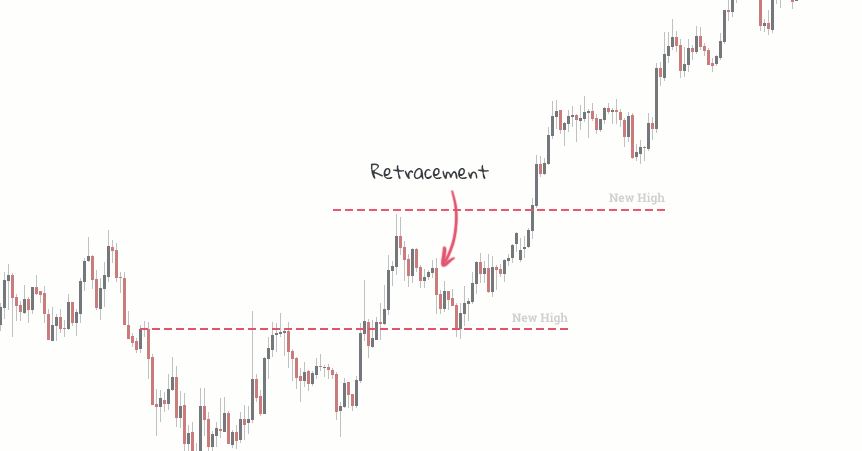The forex market, with its constant price fluctuations, can be intimidating. But within this seemingly erratic dance lies a predictable pattern: retracements. These temporary price reversals are not roadblocks, but rather opportunities for savvy traders.
Imagine a runner in a marathon. They surge forward, but even the most resilient athlete needs to catch their breath. These short breaks are similar to retracements in forex. The main trend persists, with the price dipping momentarily before resuming its course.

Understanding retracements empowers you to navigate the forex market with more confidence. This guide will equip you with the knowledge to leverage them to your advantage.
Unveiling the Enigma: What are Retracements?
Retracements are brief counter-movements against the prevailing trend. They are not full-blown reversals, but rather pauses for the market to “consolidate” before continuing its dominant direction. Think of them as corrections before the main trend resumes.
These pauses occur for various reasons. Profit-taking by traders locking in gains can trigger a temporary price dip. The market may also be self-correcting after a strong move. Additionally, psychological factors like fear and uncertainty can cause temporary pullbacks.
Hallmarks of a Retracement
Unlike fleeting market blips, retracements have distinct characteristics:
- Short-lived: Retracements are brief compared to the overall trend. They are like ripples on a flowing river, momentarily interrupting the current but not altering its direction.
- Predictable Levels: Retracements often occur at predictable levels like support and resistance zones, historical price points where the market has previously bounced back.
- Lower Volume: Retracements are usually accompanied by lower trading volume compared to the main trend. Imagine a crowded marketplace becoming less bustling – that’s a sign of a potential retracement.
Retracements vs Reversals: Knowing the Difference
The ability to differentiate between retracements and reversals is crucial. Retracements are temporary, while reversals signal a complete shift in the trend direction. Visualize a detour on a road trip (retracement). But if you reach a dead end and have to completely change course, that’s a reversal.

Here are some key pointers:
- Confirmation is Key: Don’t jump the gun! Look for confirmation that the price is indeed retracing and not reversing before making any trading decisions.
- Volume Speaks Volumes: Pay attention to trading volume. A significant drop in volume often accompanies retracements, whereas a surge in volume might indicate a potential reversal.
Tools for Identifying Retracements
Forex traders have a toolbox to pinpoint retracements:
- Fibonacci Retracement Levels: Derived from mathematical ratios, these levels are used to predict potential retracement points. By applying them to a price chart, you can identify areas where the market might encounter resistance and potentially retrace.
- Moving Averages: These act as dynamic support and resistance levels, highlighting zones where retracements might occur.
- Support and Resistance Levels: Based on past price behavior, these levels can act as magnets, attracting the price back to these zones during retracements.
The Art of Analysis: Decoding Retracements
Analyzing retracements involves a methodical approach:
- Identify the Trend: Is it up, down, or sideways?
- Harness the Tools: Apply Fibonacci levels, moving averages, or support/resistance to identify potential retracement points.
- Volume Verification: Observe the trading volume for confirmation. A decrease in volume strengthens the case for a retracement.
- Confirmation Counts: Look for confirmation signals before entering a trade based on a retracement.
Common Pitfalls to Avoid
Even seasoned traders can fall prey to mistakes:
- Mistaken Identity: Don’t confuse retracements with reversals. Always confirm the underlying trend before acting.
- Ignoring Volume: Don’t overlook a surge in volume that might signal a potential reversal.
- Overzealous Trading: Don’t trade every minor pullback; focus on significant retracements within the trend.
Conclusion:
In conclusion, retracements are not roadblocks in the forex market, but rather opportunities in disguise. By understanding their characteristics and utilizing the tools available, you can identify retracements and leverage them to your advantage. Remember to confirm the trend, pay attention to volume whispers, and avoid overtrading. With practice and continuous learning, you can tame the forex market by mastering retracements and making informed trading decisions. Happy trading!


